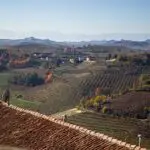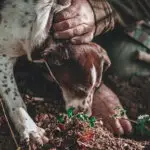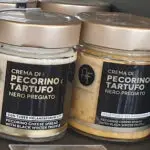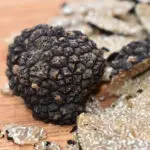When it comes to the exotic or the luxurious in food, truffles and truffle oil are gaining popularity in gourmet cuisine. But despite the high demand, their rarity makes truffles a luxury that can cost hundreds, sometimes even thousands, of dollars.
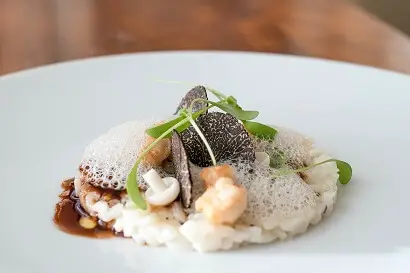
Truffles are a rare fungus that only grows in a few places in the world, and their long cultivation time makes even growing and harvesting truffles a long-term project, making them a luxury food item.
For more about truffles, their uses, hunting, and cultivation, read on.
Are Truffles A Luxury?
Truffles are definitely considered a luxury, especially white truffles, which are far rarer than black truffles. Even the cheapest truffles – Chinese black truffles – cost over $5 an ounce.
Comestibles like truffle oil or truffle butter can be less expensive, but high-quality products can still command top dollar.
Why Are Truffles a Luxury?
Truffles are a luxury item because of their rarity. They only grow in specific areas of the world, under narrowly defined conditions.
For truffles to grow, they need specific soil conditions, and they prefer to take root in specific trees, such as oak or hazelnut trees.
In addition, truffles grow underground near the roots of trees, and require the use of a truffle dog to find, and careful effort to be harvested. They also cease to be fresh after a few days, and they lose a lot of their flavor if they aren’t used soon after harvesting.
How Much Do Truffles Cost?
Truffles are generally sold by ounce, and depending on the quality and the type, the price for a single pound can be thousands of dollars.
The Truffle.farm website listed these prices for some of the most common and well-known truffle types:
- Italian White Truffles: ~$212 per ounce
- Winter Black Truffle: ~$20.50 per ounce
- Burgundy Black Truffle: ~$25 per ounce
- Summer Black Truffles: ~$23 per ounce
These costs add up, driving the prices per pound for truffles sky-high.
Factors That Determine the Cost of Truffles
The price of any given type of truffle is largely determined by flavor, quality, and rarity.
A black truffle is less expensive than a white truffle because they grow in a larger range of environments.
For example, Tuber Melanosporum (Winter Black Truffle) can be found in several locations, whereas Italian White Truffles (Tuber Mangnatum) are incredibly rare, and found in only a very small region of the world.
Finding where these rare fungi are buried among the roots of specific trees, takes a great deal of effort, never mind the costs to start harvesting truffles.
Costs of Truffle Hunting and Harvest
Getting into the truffle business through truffle harvest requires very little investment, but there are certain things you need, like truffle hunting dogs.
The dogs need to be trained, and would-be truffle hunters need to be able to identify the proper ground to hunt for truffles, including proper soil and trees.
For those who don’t live in an area where truffles are generally found, there are also costs involved with travel to truffle-growing areas.
In addition, there are issues involved with production and shipping. Truffles have a very short shelf life and need to be either sold and eaten or processed into other products like truffle butter or truffle oil before they lose their flavor.
Where Can Truffles Be Found?
Truffles can be found mostly in certain areas of Italy, France, and Spain, especially the rarer white truffle. Some of the more common black truffle varieties also grow in the Pacific Northwest, in areas like Oregon.
These plants are often found near oak trees or firs, in shaded areas with alkali soil with high moisture content.
Costs of Truffle Cultivation and Farming
At this time, truffle cultivation and truffle farms are becoming more and more common. With high demand and a ready market, starting a truffle farm is considered a high-value investment.
The initial investment can be a bit expensive, but with patience and five years of careful cultivation, a farm has the chance to start producing a very valuable crop.
What’s Needed For Truffle Cultivation?
A good truffle farm generally has at least an acre of land, with plenty of trees for truffle spores to grow in and around.
There should be a few trees per acre, and each of those trees needs to be carefully populated with truffle spores after planting, so they can begin to grow. Oak trees, hazelnut trees, and beech trees are some of the best options.
Each tree needs to be irrigated as well, to make sure the land has the proper moisture content. The soil also needs to be properly balanced and the land needs to be nurtured with the necessary nutrients.
A truffle orchard has multiple trees on one acre, and each plant needs to be monitored for the investment to pan out.
Once the trees begin to produce truffles, truffle growers also need to get a truffle dog to sniff out the production from the truffle farm.
The Pros And Cons Of Investing In Truffle Producing Trees
The pros and cons of the truffle farm mostly involve the delicate balance of factors regarding your investment and the viability of your trees.
Pros:
- There’s a ready market for the truffles and a high demand.
- Once you start growing your own truffles and the trees are established, it can be sustained, so the investment can continue to produce income for several years.
- Oak trees, and other common truffle producers are fairly easy to grow, and a farm doesn’t require much room – one acre or so.
- The products can be sold by the ounce and in multiple products, like truffle oil, truffle butter, and truffle salt, so there are options if you can’t ship your product immediately.
Cons:
- The trees have to be carefully cultivated and monitored for proper soil conditions.
- Each tree has to have the spores planted around the root system to grow.
- The investment takes about five years to pay off, sometimes as many as seven or more.
- There’s no guarantee truffles will grow, no matter how long you wait.
- Which tree will take truffle spores and which won’t is largely up to nature.
- Growing your own truffles can be a time-intensive process, and requires a lot of patience.
- Once the truffles are harvested, they need to be processed into truffle oil and other products or sold within a few days to retain their flavor.
Is Truffle Farming Going to Make Truffles Less of a Luxury Item?
Truffle farming and cultivation are becoming part of the truffle business these days, but it’s a long way from making a dent in the rarity of truffles compared to other luxury food items.
Challenges for truffle cultivation include the necessity of a long-term production time and the uncertainty of results. as well as the delicacy of the end product and its short shelf life.
In addition, rarer truffles require much more work to grow, and experts around the world are still working to develop viable methods for growing the rarer white truffles on farms.
Even growing black and burgundy truffles, which are somewhat easier, can be a delicate process.
Final Thoughts
Truffles are definitely a luxury food item, and that’s not likely to change any time in the near future. The environments they prefer are shrinking, and techniques to cultivate truffles on a farm are still in their infancy and yield variable results.
The truffle flavor is prized and can be added with truffle oil or any other number of truffle-based products if you’re looking for a less expensive option than actual truffles. However you choose to add this gourmet flavor to your cuisine, it’s possible to enjoy these luxury delicacies – as long as you’re ready to pay the price they demand.
- The Top Restaurants Specializing in Truffle Dishes - August 10, 2023
- Truffle Panna Cotta: A Decadent Dessert Recipe for Truffle Lovers - August 7, 2023
- Truffle Scrambled Eggs: A Luxurious Breakfast Delight - August 7, 2023

